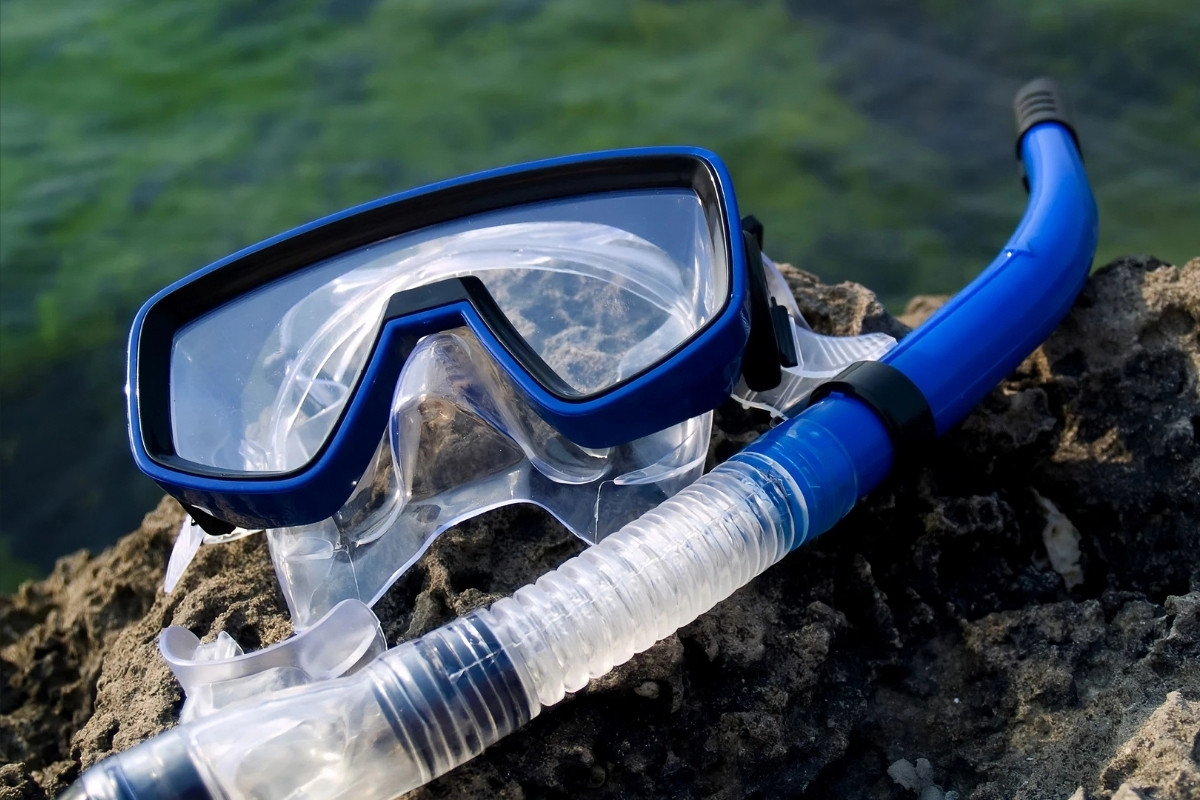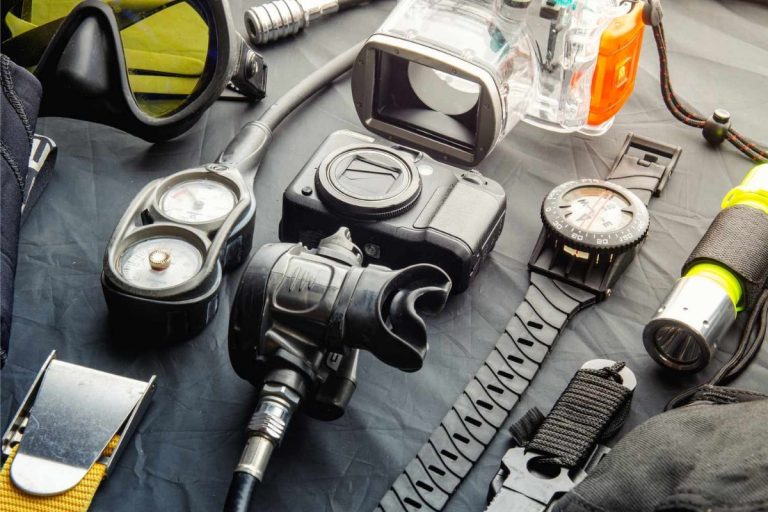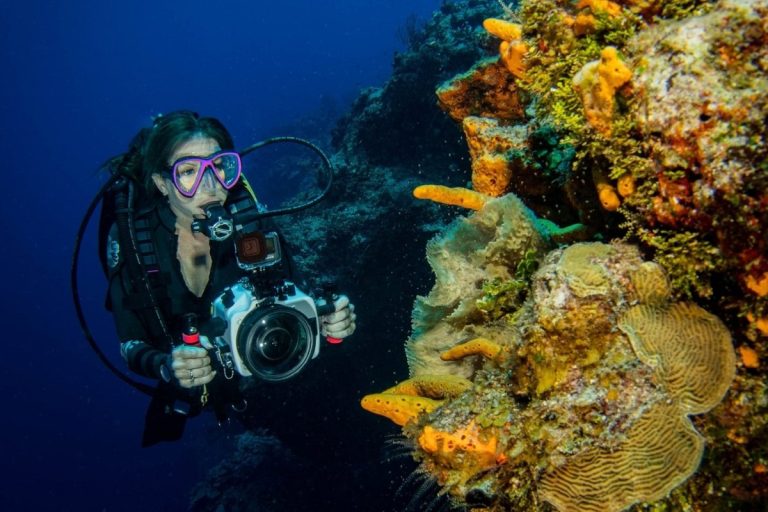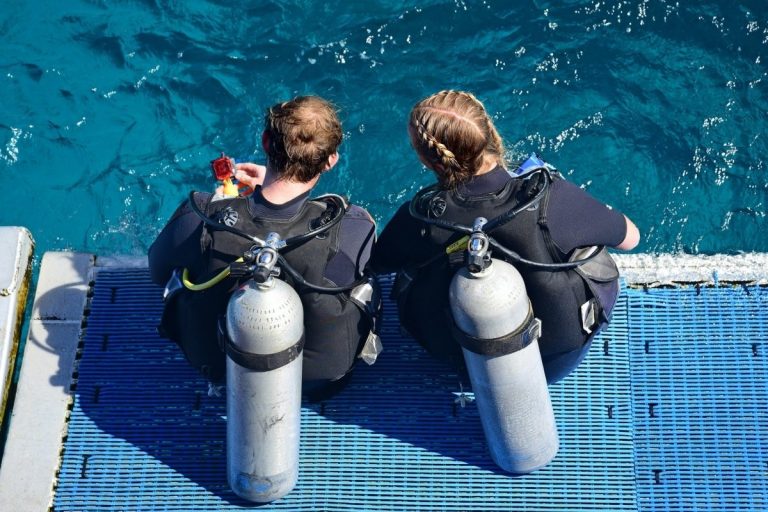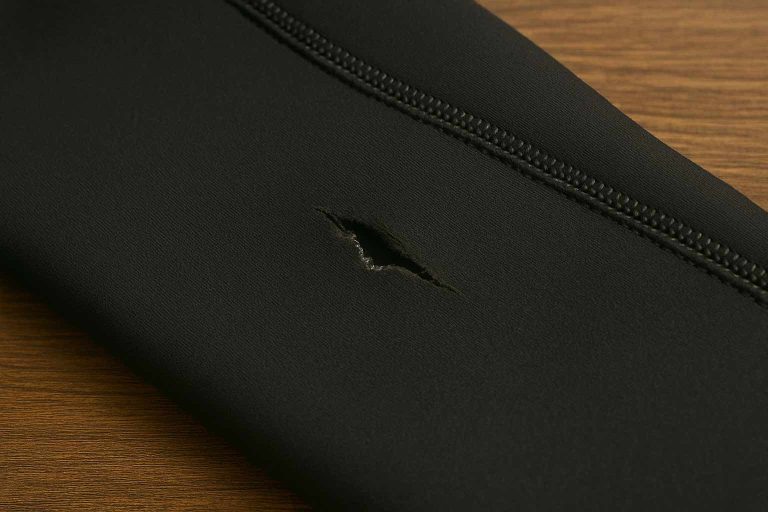Understanding Mask Leaks
Water seeping into your diving mask can turn an amazing underwater experience into a frustrating ordeal. The most common culprits behind mask leaks are surprisingly simple, yet many divers struggle with them repeatedly. Hair strands caught under the silicone skirt create tiny gaps that allow water to enter, while facial expressions like smiling or frowning can break the seal momentarily. Even small particles of sand or debris on the mask skirt can prevent a watertight fit.
Temperature changes also play a role in mask performance. Cold water can cause the silicone to contract slightly, potentially affecting the seal quality. Additionally, old masks with worn or damaged skirts lose their flexibility over time, making it nearly impossible to achieve a proper seal regardless of adjustment techniques.
The position of your mask on your face matters more than most people realize. Placing it too high or too low can create pressure points that prevent even contact around the entire perimeter. Understanding these fundamental causes helps you address leaks systematically rather than making random adjustments that might worsen the problem.
Common Causes of Leaks
Hair interference ranks as the number one cause of mask leaks among both beginners and experienced divers. Even a single strand can create a pathway for water entry. Facial hair presents similar challenges, particularly around the upper lip and sideburn areas where the mask skirt makes contact.
Improper mask positioning often goes unnoticed until you’re already underwater. Many divers place their masks too high on the forehead or too low on the nose, creating uneven pressure distribution that compromises the seal.
Importance of Proper Fit
A properly fitted mask should feel comfortable without being overly tight. The silicone skirt needs to make even contact with your skin all around the perimeter. Testing the fit involves placing the mask on your face without the strap and gently inhaling through your nose. A well-fitted mask will stay in place through suction alone.
Face shape variations mean that not every mask design works for every person. Some faces require low-volume masks, while others need larger internal spaces to accommodate prominent nose bridges or deeper-set eyes.
Role of Facial Hair in Seal Integrity
Facial hair creates microscopic gaps between the mask skirt and skin, allowing water to seep in gradually. Even well-trimmed beards and mustaches can interfere with the seal. Many experienced divers with facial hair apply a thin layer of petroleum jelly or specialized mask sealant to fill these gaps temporarily.
Some mask manufacturers now produce models specifically designed for divers with facial hair, featuring modified skirt designs that work around common problem areas while maintaining comfort and safety standards.
How Breathing Technique Affects Leaks
Breathing through your nose while wearing a mask creates pressure changes inside the mask space that can affect the seal. Proper technique involves breathing slowly and steadily through your mouth, using your regulator or snorkel consistently. Rapid or irregular breathing patterns can cause the mask to shift slightly with each breath.
Exhaling through your nose occasionally is normal for mask clearing, but habitual nose breathing underwater often indicates anxiety or improper training that should be addressed through practice and possibly additional instruction.
Testing for a Good Seal
Before purchasing any mask, thorough testing ensures you get equipment that actually works for your face shape. The basic suction test involves placing the mask against your face without using the strap, then inhaling gently through your nose. A properly fitted mask will create enough suction to stay in place for several seconds without any support.
Different lighting conditions can affect how well you see potential fit issues during testing. Natural daylight provides the best conditions for evaluating mask fit, as artificial store lighting can hide subtle gaps or pressure points that become obvious underwater.
Water temperature testing at home helps identify potential problems before your diving trip. Fill a large bowl with cool water and test your mask seal by submerging your face briefly. This simple test often reveals fit issues that aren’t apparent during dry testing sessions.
Pre-Purchase Seal Testing
Most reputable dive shops encourage customers to test masks thoroughly before purchase. Start by examining the silicone skirt for any manufacturing defects, tears, or irregularities that could affect sealing. Quality masks have smooth, flexible skirts without visible mold marks or rough edges.
Try multiple sizes and styles during your visit. What feels comfortable initially might not provide the best seal, and what seems tight at first might be perfect once you adjust to the sensation.
Using a Dry Face for Improved Sealing
Moisture, oils, and lotions on your skin can interfere with mask sealing by creating a slippery barrier between the silicone and your face. Always start with a completely clean, dry face when testing or using your mask. Avoid applying sunscreen or moisturizers to areas where the mask skirt makes contact.
Some divers find that a light dusting of baby powder on the mask skirt improves initial sealing, though this technique requires careful application to avoid getting powder in your eyes or breathing passages.
Adjusting the Mask for Comfort
Proper strap adjustment involves finding the sweet spot between too loose and too tight. The straps should hold the mask in position without creating pressure points behind your ears or at the back of your head. Split-strap designs often distribute pressure more evenly than single-strap models.
Position the straps properly on the back of your head, typically at the widest part of your skull rather than at the base of your neck. This positioning provides better stability and reduces the tendency for the mask to shift during movement.
Mask Care and Maintenance
Regular maintenance extends mask life and ensures consistent performance throughout your diving adventures. Saltwater, chlorine, and UV exposure gradually degrade silicone materials, making proper care essential for maintaining seal integrity. After each use, thorough rinsing removes corrosive salt deposits and chemical residues that can cause premature aging.
Storage conditions significantly impact mask longevity. Extreme temperatures, direct sunlight, and contact with petroleum products can damage silicone skirts and reduce their flexibility. Proper storage involves keeping masks in cool, dry places away from sharp objects that might puncture or tear the delicate materials.
Professional servicing isn’t typically necessary for masks like it is for regulators, but annual inspections help identify wear patterns and potential problems before they cause leaks underwater. Many dive shops offer free mask inspections as part of their customer service programs.
Regular Inspections
Monthly visual inspections help catch problems early when they’re still manageable. Look for small tears, cracks, or areas where the silicone appears to be hardening or losing flexibility. Pay special attention to stress points where the skirt attaches to the mask frame, as these areas experience the most wear during normal use.
Check the strap attachment points for signs of wear or loosening. Loose connections can cause uneven pressure distribution that affects sealing performance even when the mask itself is in perfect condition.
Rinsing and Storing Your Mask
Immediate post-dive rinsing prevents salt crystal formation that can damage silicone over time. Use fresh water and gentle agitation to remove all traces of salt, sand, and organic matter. Avoid using hot water, which can accelerate silicone degradation and potentially warp plastic components.
Complete drying before storage prevents mold and mildew growth that can create unpleasant odors and potentially compromise material integrity. Store masks in protective cases or soft pouches to prevent scratches and accidental damage during transport.
Annual Servicing Recommendations
While masks don’t require complex servicing like other diving equipment, annual professional inspections can identify subtle problems that affect performance. Experienced dive shop technicians can spot early signs of material fatigue, improper wear patterns, and compatibility issues with other equipment.
Consider replacement when masks show significant wear, persistent leaking despite proper fit, or damage that affects structural integrity. Quality masks typically last several years with proper care, making them excellent long-term investments for regular divers.
Choosing the Right Mask
Selecting the perfect mask involves balancing fit, features, and personal preferences to find equipment that enhances rather than hinders your underwater experience. Volume considerations affect both comfort and functionality, with low-volume masks being easier to clear but potentially less comfortable for extended wear. High-volume masks offer more internal space but require more effort to clear when water enters.
Lens configuration impacts both vision and fit characteristics. Single-lens masks provide unobstructed vision but might not fit all face shapes optimally. Dual-lens designs offer better fit flexibility and the option for prescription lenses, though they create a small blind spot where the nose bridge divides the field of view.
Frame materials and design elements affect durability, weight, and overall performance. Modern masks use advanced materials and manufacturing techniques that weren’t available in older designs, making newer models generally superior in terms of comfort and reliability.
Key Features to Look For
Tempered glass lenses provide superior clarity and safety compared to plastic alternatives. They resist scratching, provide distortion-free vision, and won’t shatter into dangerous fragments if damaged. Quality masks always use tempered glass as standard equipment rather than an optional upgrade.
Adjustable strap systems allow fine-tuning of fit and pressure distribution. Look for masks with easy-to-use adjustment mechanisms that can be operated while wearing gloves, as you might need to make adjustments during diving activities.
Silicone Skirts vs. Other Materials
Modern diving masks exclusively use silicone for skirt construction due to its superior properties compared to older rubber materials. Silicone remains flexible across a wide temperature range, resists degradation from UV exposure and chemicals, and provides excellent sealing characteristics against various skin types.
Quality silicone feels smooth and flexible without being overly soft or sticky. Cheap silicone alternatives often feel tacky or have strong chemical odors that indicate inferior materials that won’t provide reliable long-term performance.
Mask Size and Style Considerations
Face measurements help narrow down suitable mask options before trying them on. Measure the distance between your temples and from the bridge of your nose to just below your lower lip to get baseline dimensions for comparison shopping.
Style preferences should balance aesthetics with functionality. While color and design elements are personal choices, ensure that decorative features don’t interfere with essential functions like strap adjustment or lens replacement if needed.
Troubleshooting Leaks
When leaks occur despite proper fitting and maintenance, systematic troubleshooting helps identify the root cause and appropriate solution. Start by determining exactly where water is entering, as different leak locations indicate different problems. Leaks around the nose area often result from breathing technique issues, while temple leaks usually indicate strap adjustment problems.
Environmental factors can cause temporary leaking in otherwise well-fitted masks. Strong currents, rapid depth changes, or extreme temperature variations might affect mask performance temporarily without indicating permanent problems with your equipment.
Understanding common misconceptions about mask leaks helps avoid ineffective solutions that waste time and potentially create new problems. Over-tightening straps is probably the most common mistake, as it often makes leaking worse rather than better by distorting the mask skirt shape.
Identifying Leak Locations
Systematic leak detection involves isolating different areas of the mask perimeter to determine where water is entering. Start by checking the most common problem areas: around the nose bridge, at the temples, and along the upper forehead seal. Each location suggests different adjustment strategies.
Use controlled conditions for testing when possible. Pool environments or calm, shallow water allow you to focus on mask performance without dealing with waves, currents, or other distractions that might mask subtle leak patterns.
Adjusting Straps for Better Fit
Proper strap tension creates even pressure around the entire mask perimeter without creating uncomfortable pressure points. Start with loose straps and gradually tighten them until the mask stays in position during normal head movements. Avoid the temptation to over-tighten, which often makes leaking worse.
Strap positioning affects both comfort and sealing performance. The strap should sit at the widest part of your head, typically just above the ears and across the crown. Improper positioning can cause the mask to shift during use or create uneven pressure that compromises the seal.
Common Misconceptions About Mask Leaks
Many divers believe that tighter straps automatically create better seals, but this approach often backfires by distorting the mask skirt and creating gaps where none existed before. The silicone skirt needs to maintain its natural shape to seal properly against facial contours.
Another common misconception is that expensive masks never leak while budget models always do. While quality generally correlates with performance, proper fit matters more than price in determining leak resistance. A well-fitted budget mask outperforms an ill-fitted premium model every time.
User Experiences and Tips
Real-world experiences from the diving community provide valuable insights that complement technical specifications and manufacturer recommendations. Many experienced divers have developed personal techniques for dealing with challenging fit situations, equipment modifications, and troubleshooting approaches that work in practical diving conditions.
Online forums and diving communities share countless stories about mask fitting challenges and solutions. These firsthand accounts often include details about specific face shapes, environmental conditions, and equipment combinations that aren’t covered in standard product literature or training materials.
Learning from others’ mistakes helps avoid common pitfalls while discovering innovative solutions that might work for your specific situation. The diving community generally shares information freely, making it an excellent resource for practical advice and real-world testing results.
Community Insights on Mask Leaks
Experienced divers often recommend trying masks from multiple manufacturers to find the best fit, as different companies design their products for different average face shapes. What works perfectly for one person might be completely unsuitable for another, regardless of quality or price differences.
Many community members emphasize the importance of patience during the fitting process. Finding the perfect mask might take several attempts and possibly trying different styles or sizes before achieving optimal results.
Breathing Techniques from Experienced Divers
Proper breathing technique development takes time and practice, but it significantly reduces mask leak problems. Experienced divers recommend practicing controlled breathing exercises on the surface before attempting challenging underwater activities that might trigger anxiety and irregular breathing patterns.
Some divers find that specific breathing rhythms work better for their individual physiology and diving style. Experimenting with different techniques during controlled practice sessions helps identify what works best for your personal needs.
Real-Life Solutions to Common Problems
Creative solutions often emerge from practical necessity during diving trips when standard approaches don’t work. Some divers carry backup masks with different fit characteristics, while others have learned to make minor adjustments to their primary mask that improve performance without compromising safety.
Field repairs and temporary fixes can save diving trips when equipment problems arise far from dive shops. However, these solutions should always prioritize safety over convenience, and permanent repairs should be made as soon as possible.
Practical Fixes for Leaks
When standard adjustment techniques don’t resolve persistent leaking, several practical solutions can improve mask performance without requiring expensive equipment replacement. Understanding these options helps you make informed decisions about whether to modify existing equipment or invest in new gear that better suits your needs.
Professional modifications should always be performed by qualified technicians who understand the safety implications of any changes to diving equipment. Improper modifications can compromise equipment integrity and create dangerous situations underwater.
Temporary fixes can be useful during diving trips, but they should never replace proper equipment maintenance and eventual replacement when masks reach the end of their useful life. Safety always takes precedence over convenience or cost considerations.
Using Underwater Filters
Specialized underwater filters and sealants can help address minor leak issues temporarily, though they shouldn’t be considered permanent solutions to fundamental fit problems. These products work by filling microscopic gaps between the mask skirt and skin, particularly useful for divers with facial hair or unusual facial contours.
Application techniques vary by product, but most require clean, dry surfaces for optimal effectiveness. Follow manufacturer instructions carefully, as improper use can create additional problems or interfere with normal mask function.
Mask Modification Techniques
Professional mask modifications can address specific fit issues that can’t be resolved through standard adjustment methods. These might include custom skirt modifications, strap system upgrades, or lens replacements that change the mask’s internal volume characteristics.
Only qualified dive equipment technicians should perform modifications that affect mask safety or structural integrity. Amateur modifications can create dangerous failure points that might not become apparent until critical moments underwater.
Specialized Masks for Unique Needs
Manufacturers now produce masks designed for specific facial characteristics, medical conditions, or diving specialties. These specialized options often provide better solutions than trying to modify standard masks to fit unusual requirements.
Research specialized options thoroughly, including user reviews and professional recommendations, before investing in expensive custom equipment. Sometimes standard masks with proper fitting techniques provide better results than specialized alternatives.
Final Thoughts on Mask Fitting
Summary of Key Points
Successful mask fitting combines proper equipment selection, correct adjustment techniques, and regular maintenance practices. The most important factor is achieving a comfortable, even seal around the entire mask perimeter without over-tightening the straps or compromising the natural shape of the silicone skirt.
Remember that finding the perfect mask might take time and possibly trying several different models. Quality scuba diving gear basics include properly fitted masks that enhance rather than hinder your underwater experience.
The Importance of Comfort in Diving
Comfortable equipment allows you to focus on the underwater environment rather than dealing with equipment problems. Persistent mask leaks create stress and distraction that can affect your safety and enjoyment during diving activities.
Investing time in proper mask fitting pays dividends throughout your diving career. A well-fitted mask becomes almost unnoticeable during use, allowing you to fully appreciate the underwater world without constant equipment adjustments.
When to Seek Professional Help
Professional assistance becomes necessary when standard fitting techniques don’t resolve persistent problems or when you’re unsure about equipment safety. Qualified dive professionals can provide expert advice about equipment selection, fitting techniques, and when replacement becomes necessary.
Don’t hesitate to seek help when troubleshooting your regulator or other critical life support equipment. Professional guidance ensures that your equipment meets safety standards and performs reliably in challenging underwater conditions.
